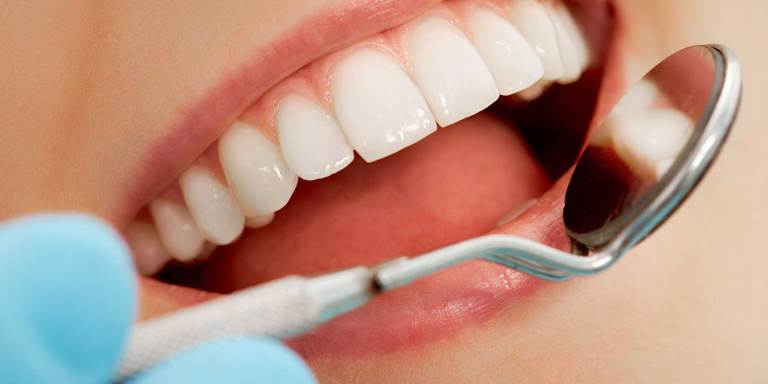Preventive Dentistry
Brushing, flossing, and rinsing are the standard way to take care of your dental hygiene. Good dental health keeps your teeth strong, gums healthy, and leads to better general health.
Make Appointment
Dental Services
Here at Bello-Burgos Smiles, we offer a variety of services that will help you achieve that perfect smile that you desire. From preventive dentistry to oral surgery, the team at Bello-Burgos Smiles are here to take care of you. We strive to bring you the most professional and convenient care that dentistry has to offer.
More Services
What are cavities?
Cavities generally develop in the "hard-to-see" places in your mouth. These are normally the places where you need to floss. When bacteria combine with food particles, they form plaque that adheres to your teeth.
As long as plaque remains on the tooth, acid produced by bacteria will eat away the tooth structure. Once through the enamel, the acid attacks the dentin, which is that part of the tooth containing sensitive nerve fibers.
If the tooth decay reaches the dentin, a filling is needed to halt the degenerative process. Otherwise, it continues at an accelerated rate becoming larger and larger.
If not detected and repaired with a filling, the decay can reach the tooth nerve and cause the need for a root canal. With the decay removed and a filling in place the tooth is restored to its original contour.
What causes tooth decay?
Tooth decay happens when plaque or bacteria come in contact with the tooth and is allowed to sit. The bacteria, once fed with sugars, will begin eroding the enamel.
Causes of tooth decay include:
- Poor oral hygiene (brushing / flossing)
- Poor diet
- Stress
- Smoking
- Genetics

Brushing
Step 1 - Place bristles along the gum line at a 45 degree angle. Gently brush using a circular motion along the outer and inner tooth surfaces.
Step 2 - Brush each tooth individually. Tilt brush vertically behind the front teeth. Using the front half of the brush, use the same circular motion.
Step 3 - Place the brush against the biting surface of the teeth and use a gentle back-and-forth motion. Brush the tongue to remove odor-producing bacteria.
What is the Best Kind of Toothbrush?
Generally speaking, a soft bristled toothbrush is best. Whether you use a manual toothbrush or an electric, anything harder than soft, is too hard. Stiff bristles may give you that clean feeling, but they can also abrade your teeth and cause gum recession.Tongue Scraper
In general, the tongue, with its rough surface, is the most common source of bad breath. "Tongue scrapers" are very effective in keeping the tongue clean.Flossing
Break off about 18 inches of floss and wind some of it around your middle finger (3 turns); this finger will take up the floss as it becomes dirty. Shorten the length between the two fingers to 6 inches and wind some floss (1 turn) around the opposite middle finger. Hold the floss tightly between your thumbs and index fingers. Guide the floss between your teeth using a gentle rubbing motion. When the floss reaches the gum line, curve it into a C-shape against one tooth. Gently slide it into the space between the gum and the tooth. Hold the floss tightly against the tooth as you gently rub the side of the tooth with an up and down motion. Before retrieving it, reverse the C-shape to clean the adjacent tooth surface as well.
As you finish cleaning each tooth, wind the dirty floss once around the first middle finger and slide more new length of floss to proceed to the next teeth.
Oral Cancer Screening
During every dental checkup, we will visually check and feel around for any signs of oral cancer. We check for signs of visible lesions inside the mouth and gently feel around the jaw for any lumps or swelling that may be present. Many early signs of oral cancer can go unnoticed by people as they go about their daily lives but we want to make sure that your overall oral health is in as best condition as possible when you see us for a dental checkup.

Gum Health
Healthy gums are generally pink and anchor the teeth firmly in place. Healthy gums do not bleed or hurt during normal brushing and flossing.
Periodontal disease is an infection of the gums, which gradually leads to the destruction of the support of your natural teeth. This can occur both above and below the gum line. As periodontal disease progresses, if left untreated, this leads to tooth loss. Early forms of gum disease can easily be treated and reversed with daily brushing and flossing and dental checkups every 6 months.
Learn more about Periodontal Disease and the Services we offer.
Periodontal Health